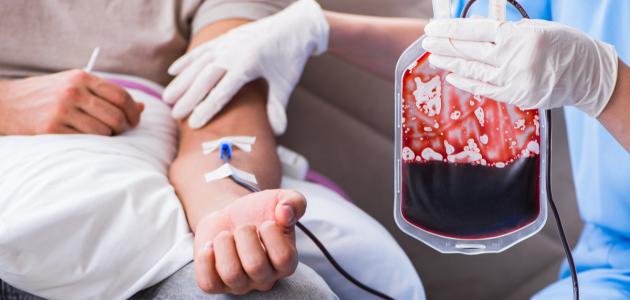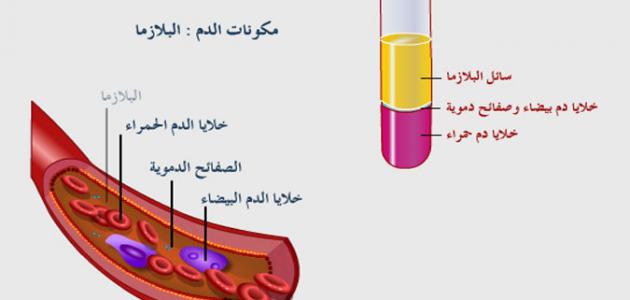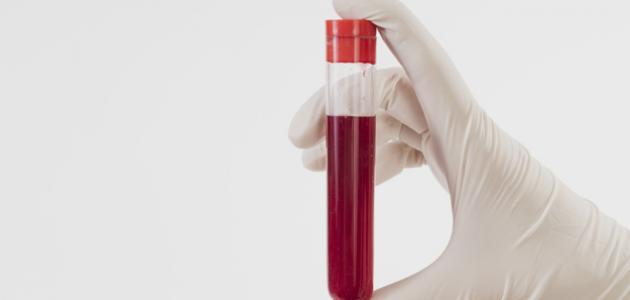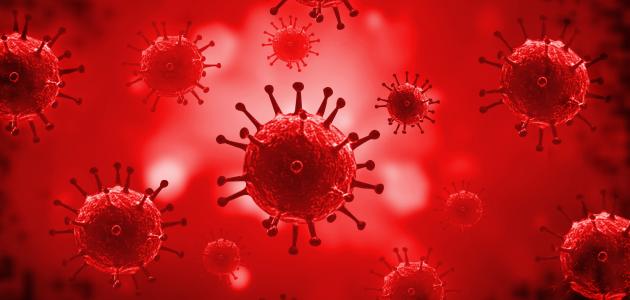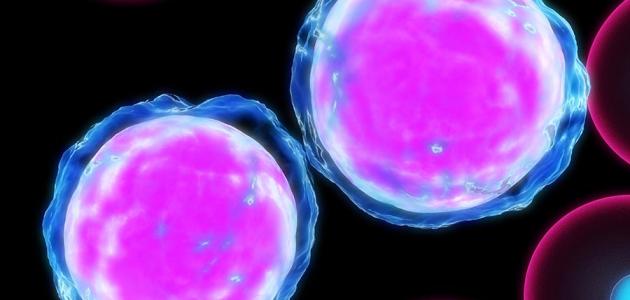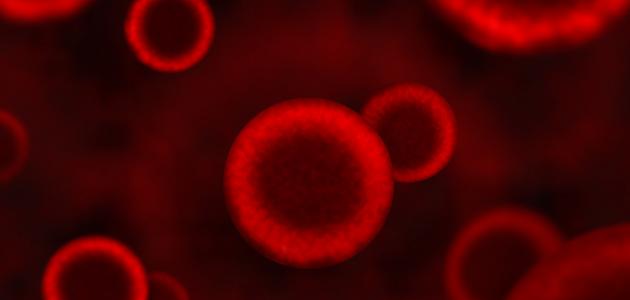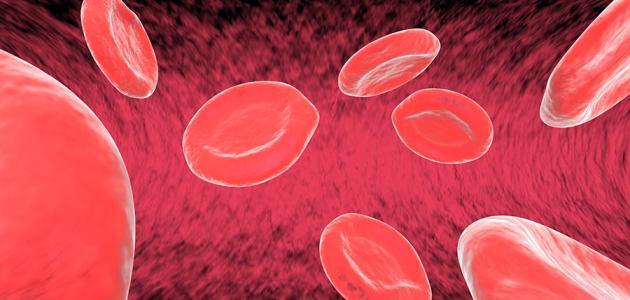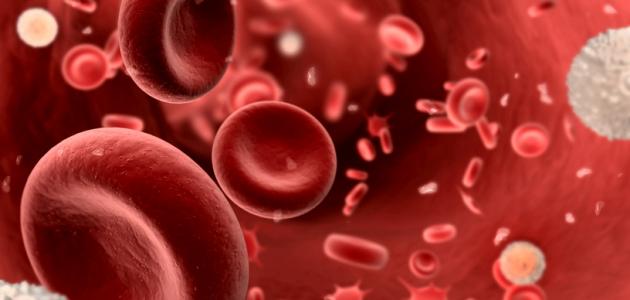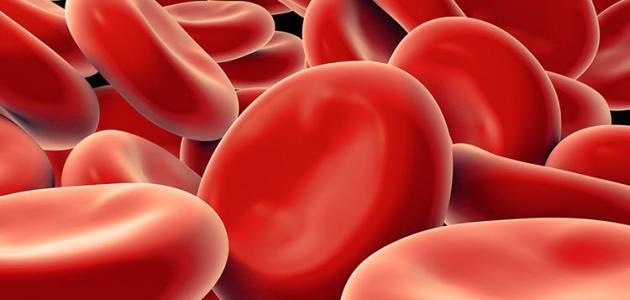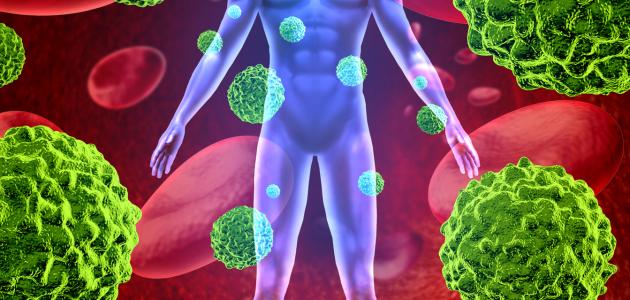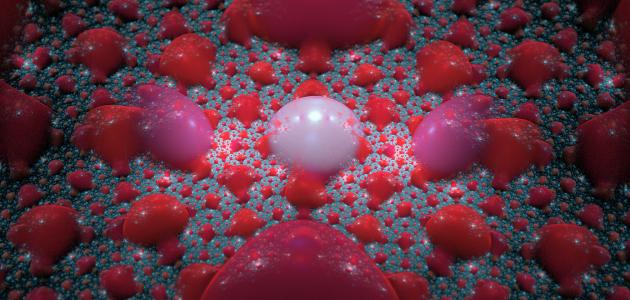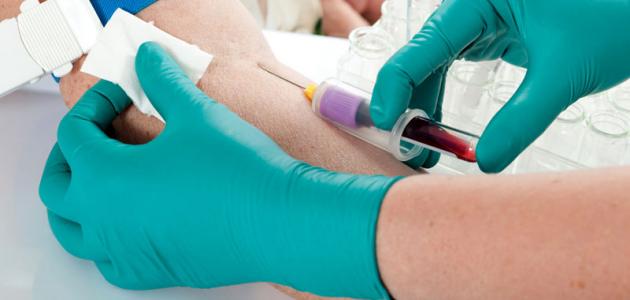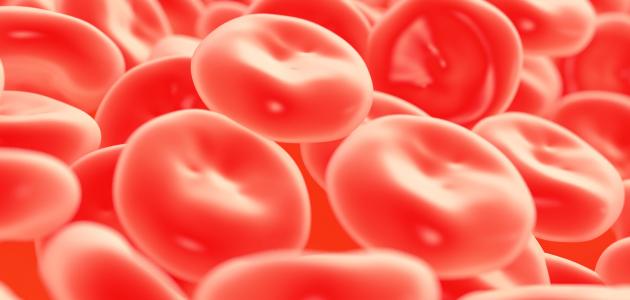Contents
Anemia or anemia overview
The term anemia is given to a condition in which there is a decrease in the total number of red blood cells in the blood, and the fact that specialists recommend that a person has anemia if the result of one of the following is below the normal limit: Hemoglobin , Or the number of red blood cells , or hematocrit , [1] To understand this, it is necessary to explain that hemoglobin is nothing but an iron-rich protein that gives red blood cells their color, and is responsible for allowing red blood cells to carry oxygen from the lungs and transport it. To different parts of the body, this is in addition to allowing red blood cells to transfer a percentage of carbon dioxide resulting from metabolism from cells of different tissues to the lungs to get rid of it there, [2]As for the hematocrit, it is the term given to packed red blood cells in relation to the whole blood, [3] and in this context it is indicated that blood is a fluid that is present in the body at a rate of approximately five liters, and it is responsible for many functions In fact, blood is more viscous than water, because half of its content is from plasma, which forms the liquid part of it, while the other half of blood is made up of three types of cells, which are red blood cells, white blood cells , and platelets. [4]
Returning to talking about anemia, it should be noted that the low level of hemoglobin, red blood cells, and hematocrit often gives the impression of anemia, but it is not considered a definite diagnosis, as it is necessary to see a specialist doctor to evaluate the situation and give the correct diagnosis, [5] based on The results of the World Health Organization show that there are approximately 1.6 billion people around the world afflicted with anemia, and this is equivalent to approximately 24.8% of the total world population, taking into account that anemia may affect people of any age group Regardless of the sex or gender, the most common cases were among children under the age of six. [6]
Before discussing the treatment of anemia, it should be noted that some cases of anemia are simple or moderate in severity and do not cause concern, and examples of this are anemia associated with some pregnancies, while some cases of anemia may be severe and their symptoms may be apparent. For long periods of time, and because red blood cells are responsible for delivering oxygen to the various organs of the body, it is expected that the person with anemia will suffer from symptoms related to lack of oxygen in the body, such as feeling tired and general fatigue, in addition to cold extremities, pale skin color, and a feeling of dizziness, Rapid heart rate , shortness of breath, etc. [7]
To learn more about anemia, read the following article: ( Causes, treatment and symptoms of anemia ) .
Treating anemia or anemia
The treatment of anemia depends mainly on the treatment of the cause, and the fact that the possible causes of anemia are many, and in general these causes are summarized in three groups, which are anemia that results from not manufacturing or producing an adequate number of healthy red blood cells, and anemia caused by bleeding. And, finally, anemia caused by the destruction of red blood cells in a higher than normal rate, and it is worth noting that each group of these groups has a number of causes, and here comes a detailed explanation of the treatment of anemia according to these causes in some detail: [7]
Iron deficiency anemia
Iron deficiency anemia is defined as a condition in which the body’s iron level is lower than normal, and this condition ranges in severity from the simple one that does not cause any symptoms or signs to appear to severe cases that cause noticeable symptoms In fact, the treatment of iron deficiency anemia depends on the severity of the condition in addition to the possibility of resorting to treatment of the cause sometimes if necessary. The following is a description of the available treatment options in some detail: [8] [9]
- Iron supplements: , are iron supplements most option commonly used to treat anemia caused by iron deficiency, and these supplements are given in the form of pills for adults, means oral for children and infants, it is worth the alarm that warns against the use of these supplements for those who do not suffer From anemia caused by iron deficiency because an excess of iron in the body may cause organ damage, and it is worth noting that if supplements are prescribed by the doctor, the doses prescribed by the doctor must be adhered to, whether one or more times per day, and he is warned to stop taking them without Review it, and it should be noted that the desired effect of the treatment may require a period of between three to six months for its appearance, and as for the instructions or recommendations for taking these supplements, they are explained below:
- Try to take iron supplements before eating and on an empty stomach if possible, in order to enhance iron absorption, but if the supplement causes nausea , it is recommended to take it with meals.
- Avoid taking antacids that are usually used to relieve heartburn, because antacids negatively affect iron absorption, and therefore it is recommended to take iron supplements two hours before taking antacids, or four hours after taking acid supplements.
- Inform the doctor about the side effects that appear after taking these supplements, such as: vomiting, diarrhea, constipation , and nausea. The doctor may change the type of supplement or adjust the dose to suit the person concerned.
- Iron injections: The doctor may resort to the iron injection option in the event that oral iron supplements are not able to restore acceptable levels of iron in the body, and usually one injection or a group of small number of injections is sufficient to control the condition and return iron to normal levels, taking into consideration That if the iron deficiency is caused by a chronic disease such as: celiac disease or chronic kidney disease, then the patient needs more iron injections, and as for the possible side effects, they are vomiting and headache, and these symptoms usually disappear after a day or two.
- Red blood cell injection: This treatment option is used only in severe cases of anemia, which may have caused severe side effects, such as feeling pain in the chest .
- Treating the cause: the cause of iron deficiency anemia is usually considered by a specialist in the event that iron supplements do not fundamentally solve the problem. It is believed that the patient is either suffering from bleeding, or from a problem in absorbing iron that prevents the body from having enough iron, and in these cases the doctor evaluates the case and analyzes it, and it may require prescribing some medications to treat heavy menstrual bleeding such as birth control pills, or antibiotics. Vitality and other drugs if the cause is a peptic ulcer , or surgery is used if the cause is the presence of fibers, polyps or tumors, or the use of endoscopic surgery to stop bleeding, if any.
Anemia caused by vitamin B12 deficiency
The bone marrow needs vitamin B12 to manufacture red blood cells, and it can be obtained from its natural food sources, such as: meat, milk, eggs, and the fact that the stomach produces a protein known as the intrinsic factor, which is responsible for enhancing the absorption of vitamin B12 in Gut, and some people may suffer from vitamin B12 deficiency anemia, Either because of the lack of access to food rich in it in sufficient quantities, or because of the poor absorption of the body of this vitamin, or because of the lack of sufficient proportion of the internal factor; The last reason is attributed to the presence of an immune defect that causes the immune system to attack the stomach cells that produce the intrinsic factor or to undergo surgery that caused the eradication of the cells that produce it, and the treatment of anemia caused by vitamin B12 deficiency is easy in most cases, and it mainly depends on eating foods containing it such as meat And liver and pills fortified with it, in addition to the sources mentioned previously, and it may resort to giving vitamin B12 supplements in the form of oral pills, by injection, or even in the form of a nasal spray, depending on the condition of the patient, for example if there is a problem in absorbing vitamin B12, it is often resorted to injection or Giving oral pills for life, and finally the specialist can resort to treating the cause if needed, and it is worth noting the need to adhere to the prescribed doses[10] [11]
Folic acid deficiency anemia
The body needs folic acid also to manufacture red blood cells, and therefore the deficiency of folic acid impedes the production of red blood cells, causing anemia known as that caused by the deficiency of folic acid, and the fact that folic acid is one of the types of B vitamins, and to understand the treatment of these The situation must be briefly explained its causes, which are represented by the following: [12] [13]
- Not eating enough foods rich in folic acid, including green leafy vegetables, meats, and fresh fruits.
- Drink a lot of alcohol.
- Infection with some health problems, such as a wheat allergy called celiac disease or celiac disease, or some types of cancer.
- Taking some medications, such as those used to treat convulsions.
- Pregnancy; As the fetus takes folic acid from the mother, and the pregnant woman's body has weaker absorption of this acid compared to normal.
In fact, the treatment of anemia due to folic acid deficiency depends mainly on the administration of folic acid supplements, often for a period of four months, and treatment may be required for a longer period than that if the cause is persistent. Treatment with folic acid, because replacing folic acid may cover the deficiency of vitamin B12, which causes complications of vitamin B12 deficiency to leave it untreated, and in addition to supplements, it is advised to adjust the diet to focus on consuming sources rich in it, such as: broccoli, brown rice, and peas, Asparagus, and Brussels sprouts, in addition to the need to treat the cause and get rid of drinking alcohol, and it should be noted that a lack of folic acid during pregnancy may cause ailments in the neural tube in the fetus, and therefore it is recommended to take it during the first four months of pregnancy. [12] [13]
Chronic disease anemia
Despite the presence of iron in sufficient quantities and perhaps surplus in its stores in the event of some chronic diseases, the infections that these diseases cause in the body prevent the body's ability to use this stored iron, thus reducing the production of red blood cells, and the patient suffers from anemia, In the context of this, it is indicated that the most chronic diseases causing inflammation are chronic kidney disease, autoimmune diseases , cancers, and rheumatoid arthritis . As for the treatment of anemia caused by these conditions, it is represented by the following: [14]
- Treating the cause, if possible: For example, giving appropriate medications to control the inflammation associated with rheumatoid arthritis leads to improved blood conditions and even cure the problem of anemia.
- Medicinal options for treating anemia: In cases of anemia caused by chronic kidney disease, iron supplements can be prescribed alongside these drugs in order to enhance their absorption.
- Blood transfusion to treat anemia: If the anemia caused by chronic diseases is very severe, the specialist can resort to the option of blood transfusion to raise the level of red blood cells quickly.
Aplastic anemia
Aplastic anemia is known as the health problem that is represented by the inability of the bone marrow to produce an adequate number of red blood cells, white blood cells, and platelets, which results in suffering from anemia, increasing the chance of infection, and coping with Problems with blood clotting, and the fact that there are many cases in which the underlying cause of suffering from aplastic anemia is not clear, while there are other cases where a specialist doctor can know the underlying cause, such as exposure to heavy metals, exposure to radiation, and a history of an autoimmune disease Such as lupus , taking some types of anticonvulsants or other medications, and so on. The most important treatment methods that may be used to control this condition can be summarized as follows: [15] [16]
- Monitoring the condition only in mild or moderate cases of aplastic anemia.
- Conducting blood transfusions, and in fact, such a procedure is not a treatment option, but rather a way to control the symptoms that the patient suffers, including bleeding and symptoms of anemia.
- Red blood cells: The transfusion of these cells helps to reduce the feeling of fatigue and other symptoms of anemia, and although this type of blood transfusion is considered somewhat safe, repeated use may cause iron overload, and the doctor can prescribe medications The occasion that limits its accumulation and thus protects the organs from any possible damage.
- Platelets: Platelet transfusions greatly help stop bleeding.
- Bone marrow transplant: ; This treatment option is suitable for some patients, especially young people for whom a suitable donor has been found, as the principle of the procedure is based on destroying the bone marrow of the patient with radiation or chemotherapy, then injecting the stem cells after purifying them and taking them from the donor, and after injecting them into the vein of the concerned person is worth Giving drugs that prevent the body from rejecting these cells, and it is worth noting that the patient often needs to stay in the hospital for a long time in addition to the possibility of developing some complications.
- Immunosuppressants: This option is used in the event that it is not possible to perform a bone marrow transplant or in cases where the cause of aplastic anemia is an autoimmune disease, as administering them aims to suppress the functioning of the immune system and thus prevent harm to the immune system For bone marrow, although immunomodulatory drugs are considered a good option in most cases, they do carry some risks and the anemia may return to what it was when you stopped taking them.
- Bone marrow stimulants: Medically known as colony-stimulating factors, such as Sargramostim, they aim to stimulate the bone marrow to produce new blood cells, and are often used with inhibitors Immunity.
- Antibacterial and antiviral: These drugs may be given periodically in very severe cases of aplastic anemia, because the patient is susceptible to serious infections.
Hemolytic anemia
The term hemolytic anemia is used for the condition in which red blood cells break down faster than normal, and this may be either due to a disorder in the red blood cells, or due to the presence of a factor that causes their breakdown earlier than it should be. Treatment of hemolytic anemia depends on the condition of the person and the nature of the problem he suffers specifically, and in general the options available can be explained as follows: [17]
- Monitor the condition without any treatment in mild cases of hemolytic anemia.
- Folic acid supplement.
- Transfusion.
- Antibiotics.
- Hydroxyurea .
- Corticosteroids.
- Immunosuppressive drugs.
- Surgery to eradicate the spleen .
Thalassemia
Thalassemia is one of the inherited health problems that are transmitted from parents to children, and the fact that there are several types of thalassemia vary in degree of severity and danger, some of which are very simple and do not require any treatment, and some of them are severe, and from the treatment options available to control Thalassemia symptoms include: [18]
- Blood transfusions.
- Iron Chelation Therapy, to remove excess iron caused by frequent blood transfusions.
- Folic acid supplement.
- Cultivation of bone marrow .
Sickle cell anemia
Sickle cell anemia is known with this name in relation to the shape of the red blood cells. The shape of the hemoglobin complex changes, which changes the shape of the red blood cells, and it is unfortunate that sickle cells are not flexible and cannot change their shape quickly, and therefore a large part of them explodes as it passes through the blood vessels , and what remains is its life cycle is less than usual, and here The bone marrow is unable to destroy the speed of its destruction, so it cannot manufacture red blood cells at a similar speed, so the patient suffers from anemia, and the truth is that bone marrow or stem cell transplantation is the only way to treat sickle cell anemia, but due to the complications that result from it, it is only used for children with severe cases of sickle cell anemia who found them a suitable donor, and as for the options available to control the symptoms and reduce the risk of complications following the mismatch: [19]
- Antibiotics .
- pain killers.
- Hydroxyurea.
- Transfusion.
References
- ↑ "Anemia of Chronic Disease and Kidney Failure" , emedicine.medscape.com , Retrieved December 29, 2019. Edited.
- ↑ "Hemoglobin" , labtestsonline.org , Retrieved December 29, 2019. Edited.
- ↑ "Hematocrit (HCT)" , www.ncbi.nlm.nih.gov , Retrieved December 29, 2019. Edited.
- ↑ "Picture of Blood" , www.webmd.com , Retrieved December 29, 2019. Edited.
- ↑ "Everything you need to know about anemia" , www.medicalnewstoday.com , Retrieved December 29, 2019. Edited.
- ↑ "Global anaemia prevalence and number of individuals affected" , www.who.int , Retrieved December 29, 2019. Edited.
- ^ A b "Anemia" , the www.webmd.com , Retrieved December 29, 2019. Edited by .
- ↑ "Iron-Deficiency Anemia" , www.nhlbi.nih.gov , Retrieved December 29, 2019. Edited.
- ↑ "Iron deficiency anemia" , www.mayoclinic.org , Retrieved December 29, 2019. Edited.
- ↑ "What Is Vitamin B12 Deficiency Anemia?" , www.webmd.com , Retrieved January 5, 2019. Edited.
- ↑ "Understanding Anemia - Diagnosis and Treatment" , www.webmd.com , Retrieved January 5, 2019. Edited.
- ^ A b "folate-Deficiency Anemia" , Www.hopkinsmedicine.org , Retrieved January 5, 2019. Edited by .
- ^ A b " the Vitamin B12 is Or Folate Deficiency anemia" , Www.nhs.uk , Retrieved January 5, 2019. Edited by .
- ↑ "Anemia of Inflammation or Chronic Disease" , www.niddk.nih.gov , Retrieved January 5, 2019. Edited.
- ↑ "Aplastic Anemia" , www.hopkinsmedicine.org , Retrieved January 5, 2019. Edited.
- ↑ "Aplastic anemia" , www.mayoclinic.org , Retrieved January 5, 2019. Edited.
- ↑ "Hemolytic Anemia" , www.drugs.com , Retrieved January 5, 2019. Edited.
- ↑ "Thalassemias" , www.nhlbi.nih.gov , Retrieved January 5, 2019. Edited.
- ↑ "Sickle Cell Disease" , medlineplus.gov , Retrieved January 5, 2019. Edited.
